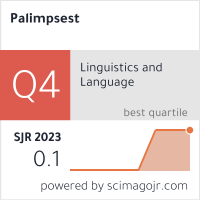POSTMODERNISM IN THE CINEMA OF DARIO ARGENTO AND BRIAN DE PALMA
DOI:
https://doi.org/10.46763/PALIM23816151mAbstract
Italian filmmaker Dario Argento and his American counterpart Brian De Palma have both made splendid and illustrious careers as movie directors, constantly flirting with postmodernist notions such as intertextuality and (self-)referentiality, while blurring the lines between high and popular art and culture. Their body of work, independently of qualitative level of individual movies, is always marked by innovation and prone to experimentation. By analyzing four of their essential movies made in the Seventies and Eighties (The Bird with the Crystal Plumage and Opera, and Phantom of the Paradise and Dressed to Kill), we have tried to determine just what is it that makes them similar, and to see how unique their approach to postmodernism is, but also to examine their relationship to the nature of cinema itself. The chosen movies are unique not just within their own body of work, but within the frames of the world cinema itself. Drawing inspiration from the masters of the past, but also pointing towards the always more complex and postmodern trends, Argento's and De Palma's movies have created, thanks to their wit, intelligence and self-awareness, their own canon, whose repercussions are felt and seen even to this day.
Keywords: Italian cinema; American cinema; postmodernism; Argento; De Palma; Hitchcock; homage.


